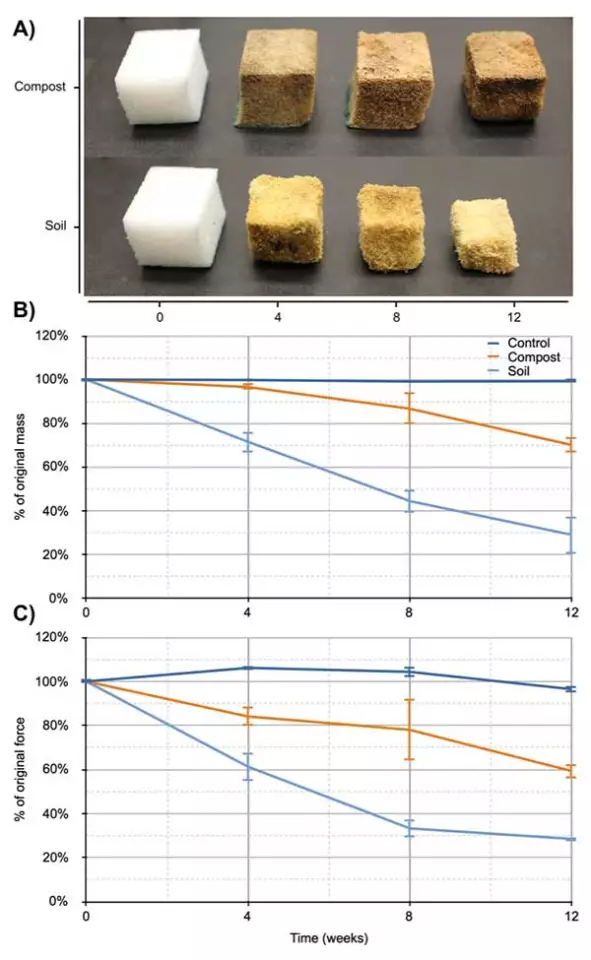The petroleum polymers used in construction of flip flops are critical to the durability and comfort of the immensely popular footwear, but are a huge contributor to our plastic pollution problem as they take a long time to break down once discarded. A team at the University of California San Diego has been working on a solution to this problem and is now showing off a pair of algae-based flip flops that make the grade for commercial footwear, but degrade in the environment in just 16 weeks.
The breakthrough centers on a new type of polyurethane foam made from algae oil and follows years of experimentation, with the team continually tweaking the combination of natural and synthetic components. Weighing up the need to produce a durable product that meets commercial standards for footwear against the ability to degrade in the environment was a long and arduous process, but the scientists now believe they have landed on the perfect recipe.
“The paper shows that we have commercial-quality foams that biodegrade in the natural environment,” says study author Stephen Mayfield. “After hundreds of formulations, we finally achieved one that met commercial specifications. These foams are 52 percent biocontent – eventually we’ll get to 100 percent.”
Not only did the commercial-grade foam meet the standards required of midsole shoes and the foot-bed of flip flops, but did so while having a far shorter lifespan in the environment than traditional materials. The researchers worked with material science startup Algenesis to turn the algae-based foam into flip flops and then to test how long the material took to break down.

This round of experiments involved placing the foam in traditional compost and soil, in which it degraded after 16 weeks. The team tracked the molecules the material shed throughout this process to ensure it had no toxic effects on the soil, and they were also able to identify the organisms that were driving the process.
“We took the enzymes from the organisms degrading the foams and showed that we could use them to depolymerize these polyurethane products, and then identified the intermediate steps that take place in the process,” says Mayfield. “We then showed that we could isolate the depolymerized products and use those to synthesize new polyurethane monomers, completing a ‘bioloop.’”
This opens to the door to not just more eco-friendly flip-flops, but a new type of plastic product that is fully recyclable. The researchers say they are on track for commercial production, but first need to work through the economical side of things with their manufacturing partners.
“The life of material should be proportional to the life of the product,” says Mayfield. “We don’t need material that sits around for 500 years on a product that you will only use for a year or two.”
A paper describing the research was published in the journal Bioresource Technology Reports.





